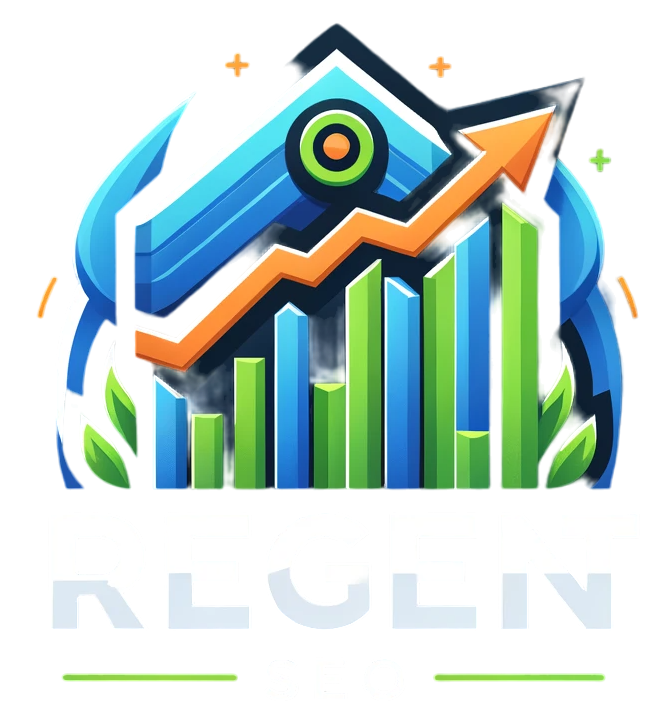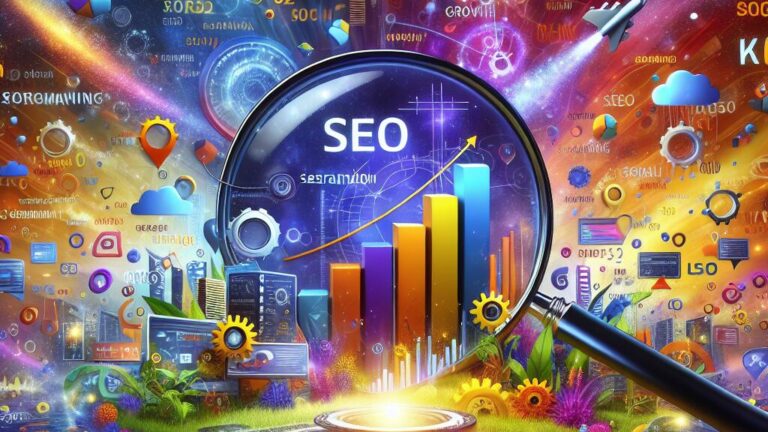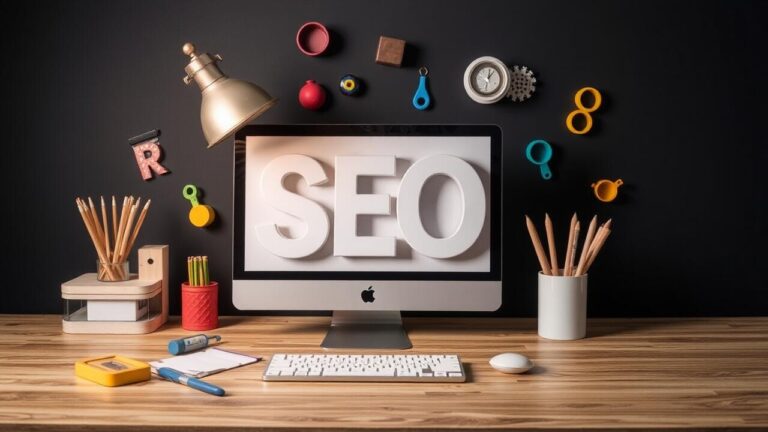How to Optimize Content for SEO
Utilizing Internal Linking Strategies
Internal linking plays a crucial role in optimizing content for SEO. By strategically linking pages within your website, you can help search engines understand the hierarchy and relevance of your content. This not only improves user experience by guiding visitors to related or important pages but also distributes link equity throughout your site.
When implementing internal linking strategies, it’s important to focus on using relevant anchor text. The anchor text you choose should accurately describe the linked page’s content and incorporate targeted keywords where appropriate. This helps search engines determine the context and relevance of the linked pages, ultimately boosting their visibility in search results. Remember to regularly audit and update your internal links to ensure they remain effective in guiding both users and search engine crawlers through your site.
Enhancing Site Structure for SEO Benefits
When it comes to optimizing your website for search engines, enhancing your site structure plays a crucial role in improving SEO performance. One key aspect to focus on is creating a clear and logical hierarchy within your website. This involves organizing your content in a way that helps both users and search engine crawlers navigate through your site easily. By categorizing your pages into relevant sections and subcategories, you can make it simpler for search engines to understand the context of each page and its relationship to the overall site.
Another important element of site structure is having a responsive and mobile-friendly design. With the increasing number of users accessing websites through mobile devices, it is essential to ensure that your site is optimized for different screen sizes and resolutions. Search engines like Google prioritize mobile-friendly websites in their rankings, so having a responsive design not only improves user experience but also boosts your SEO efforts. Additionally, a responsive design reduces bounce rates and increases the chances of retaining visitors on your site, ultimately leading to higher search engine visibility.
Optimizing Images for SEO
Images play a crucial role in enhancing the user experience of a website, but they also present an opportunity for SEO optimization. When adding images to your content, it is essential to pay attention to the details. One important aspect is the use of descriptive alt text and file names. These elements provide search engines with valuable information about the content of the image, helping them understand the context and relevance of the visual content in relation to the overall webpage. By incorporating relevant keywords in the alt text and file names, you can improve the chances of your images being discovered through image searches, thus driving more organic traffic to your site.
In addition to optimizing alt text and file names, the size and format of images can impact your website’s SEO performance. Large image files can slow down your site’s loading speed, negatively affecting user experience and search engine rankings. To mitigate this issue, it is recommended to compress images without compromising quality. Furthermore, utilizing appropriate image formats such as JPEG or PNG can contribute to faster loading times. By optimizing the images on your website, you not only enhance SEO but also create a more seamless browsing experience for visitors.
Adding Descriptive Alt Text and File Names
Adding descriptive alt text and file names to your images is crucial for optimizing your content for SEO. Alt text provides context to search engines about the content of your images, which can improve your website’s accessibility and search engine rankings. When creating alt text, make sure to accurately describe the image using relevant keywords to increase the chances of your content being discovered by users searching for similar topics.
Similarly, naming your image files descriptively can also positively impact your SEO efforts. Instead of using generic file names like “image123.jpg,” opt for names that reflect the content of the image. For instance, if your image is of a beach sunset, name the file “beach-sunset.jpg” to give search engines more information about the image. This practice not only helps improve your website’s SEO but also enhances the overall user experience by providing more context to your visual content.
Importance of Page Speed
Page speed plays a crucial role in the overall user experience and SEO performance of a website. When a website loads quickly, users are more likely to stay on the site, engage with the content, and ultimately convert. In addition to enhancing user experience, search engines like Google consider page speed as a ranking factor, meaning that faster loading times can positively impact a website’s SEO efforts.
To improve page speed, website owners can implement various strategies such as optimizing images, leveraging browser caching, and minifying CSS and JavaScript files. By reducing the size of images and compressing files, websites can load faster and provide a seamless browsing experience for visitors. Furthermore, utilizing content delivery networks (CDNs) can distribute website content across multiple servers worldwide, reducing server response times and boosting overall page speed.
Implementing Caching and Minifying Resources
Implementing caching and minifying resources are crucial steps in optimizing your website for SEO benefits. By caching resources, you can store frequently accessed data closer to the user, reducing loading times significantly. This results in a faster and more seamless user experience, which is a key factor in improving your website’s search engine ranking.
Minifying resources involves removing unnecessary characters from your code, such as white spaces and comments, to reduce file sizes. This optimization technique helps to speed up loading times since smaller files are quicker to download. Implementing both caching and minifying resources not only enhances your website’s performance but also boosts your SEO efforts by improving site speed, which search engines like Google prioritize for ranking websites.
Leveraging Social Media for SEO
Social media platforms have become integral for businesses to boost their online presence and reach wider audiences. Leveraging social media for SEO involves more than just sharing content. It’s essential to engage with followers, respond to comments and messages promptly, and build a strong community around your brand. By actively interacting on social platforms, you not only increase brand visibility but also create opportunities for backlinks and shares, which can positively impact your SEO rankings.
In addition to engaging with followers, sharing high-quality and relevant content regularly on social media can drive traffic to your website. When users engage with your content by liking, sharing, or commenting, it signals to search engines that your website is valuable and authoritative. This social engagement can lead to increased brand awareness, higher website traffic, and ultimately, improved SEO performance. It’s crucial to develop a social media strategy that aligns with your SEO goals and ensures consistency in messaging across all platforms.
Sharing Content to Increase Visibility
Sharing content plays a crucial role in increasing visibility and driving traffic to your website. By utilizing various social media platforms such as Facebook, Twitter, and Instagram, you can reach a wider audience and attract more visitors to your site. When sharing content, remember to use engaging captions and high-quality images to capture the attention of your audience.
Moreover, encourage your followers to share your content by making it easy for them to do so. Including social sharing buttons on your website allows visitors to easily share your content with their own networks, thereby expanding your reach even further. Engaging with your audience through comments and messages can also help foster a sense of community around your brand, leading to increased visibility and brand loyalty.
FAQS
How can internal linking strategies help improve SEO?
Internal linking strategies can help optimize content for SEO by directing visitors to other relevant pages on your website, enhancing site navigation, and improving the overall user experience.
Why is it important to optimize images for SEO?
Optimizing images for SEO by adding descriptive alt text and file names can improve the accessibility of your content for visually impaired users and help search engines understand the context of your images, leading to potential ranking benefits.
How does site structure impact SEO?
Enhancing site structure for SEO benefits involves organizing your content in a logical manner, making it easier for search engine crawlers to index your site and improving overall visibility in search engine results pages.
What role does page speed play in SEO?
Page speed is a crucial factor in SEO as faster-loading pages lead to improved user experience, lower bounce rates, and potentially higher search engine rankings. Implementing caching and minifying resources can help optimize page speed.
How can social media be leveraged for SEO purposes?
Leveraging social media for SEO involves sharing content across various social platforms to increase visibility, drive traffic to your website, and potentially earn backlinks from authoritative sources, all of which can positively impact your SEO efforts.







